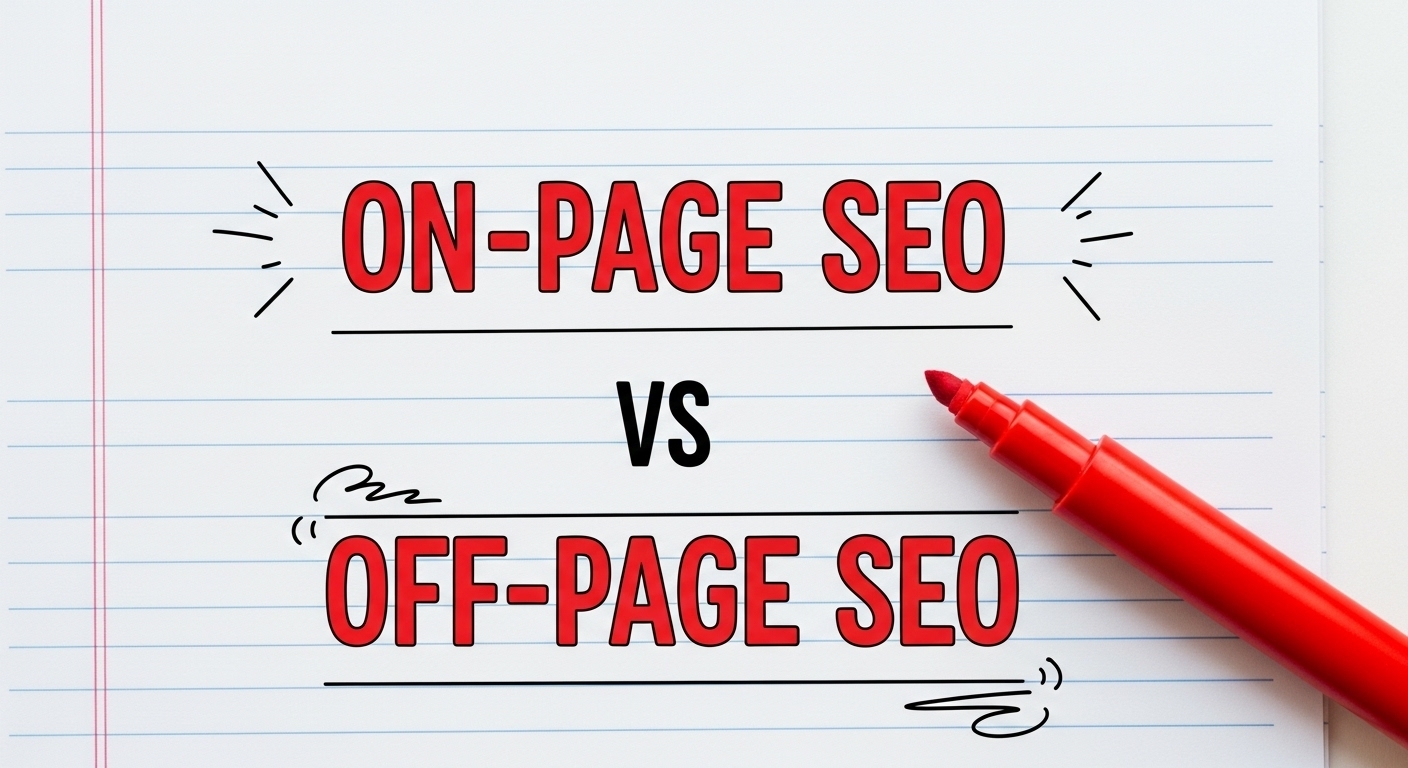10 min read
The Impact of Blog Post Frequency on On-Page SEO Explained
Jeremy Wayne Howell
:
Jul 3, 2025 6:14:02 AM

Key Highlights
-
Blog post frequency plays a major role in improving on-page SEO and increasing visibility on search engines by signaling site activity.
-
Consistent publishing schedules boost organic traffic and help establish topical authority within your industry.
-
Fresh, well-written content improves search engine rankings by ensuring that your website stays relevant and current.
-
Striking the right balance between quality content and regular updates prevents audience disinterest and avoids practices like keyword stuffing.
-
Monitoring competitor posting schedules and aligning with industry standards sharpens your SEO content strategy.
-
Frequent blog publishing significantly impacts user engagement by shaping behavioral signals such as dwell time and bounce rates.
Overview
How often should you blog to optimize your SEO strategy? Blog post frequency is more than mere scheduling; it’s a critical element of on-page SEO driving organic traffic and boosting search engine performance. Regular updates signal to search engines that your website is active.
This benefits your rankings and strengthens your online presence. But it’s not just about quantity; creating fresh, quality content is equally crucial. This blog uncovers how consistent blogging helps refine your SEO and maintain an engaged audience base.
The Role of Blog Post Frequency in On-Page SEO
Publishing frequency directly connects with on-page SEO by influencing search engine algorithms and audience engagement. Regular blog posts enhance search engine visibility, as fresh content indicates relevance and activity. However, it’s essential to pair frequent updates with content quality to maintain credibility.
A well-planned posting schedule also helps improve search engine rankings by catering to algorithmic preferences for timely, engaging content. From indexing benefits to user engagement, understanding blog frequency’s role is crucial. Let’s explore key components of this dynamic relationship.
Defining Blog Post Frequency
Blog post frequency refers to how often content creators publish new posts, and it holds a strong influence over SEO success. A consistent posting schedule, whether daily, weekly, or monthly, ensures that websites remain active and visible. For example, blogging three times a week often results in noticeable audience engagement growth and better search rankings.
Using a content calendar allows creators to map out when and what to publish, keeping production organized and predictable. Such clarity helps manage workloads and ensures that every piece of content maintains its quality.
For content creators, balancing their number of posts with consistency is central to achieving long-term results. Too many posts can overwhelm readers and search engines, while infrequent updates reduce engagement and traffic. Striking a harmonious rhythm is the cornerstone of sustainable blogging success.
How Search Engines Respond to Fresh Content
Search engines favor fresh content as it signifies an active and up-to-date website. Regular updates improve search engine optimization (SEO) by ensuring indexable, relevant material. Websites publishing engaging new content get indexed more often, which typically leads to higher rankings.
For example, blogs aligning their post frequency with regular updates enjoy better visibility in search results. Search engines prioritize active sites, rewarding their effort with improved traffic and reach.
Incorporating new, unique content taps into evolving trends and keywords, fulfilling search intent effectively. This proactive SEO approach ensures audience requirements are met, emphasizing why fresh blog posts are essential for long-term growth.
Why Blog Post Frequency Matters for SEO Performance
Blog post frequency has a direct link to SEO performance, bridging technical elements like crawling with content quality demanded by audiences. An active site entices search engine crawlers to revisit, leading to consistent indexing of new pages.
From encouraging user retention to improving organic traffic, publishing consistently strengthens your site’s authority. Posting frequency must also remain balanced with delivering helpful content, as this ensures a positive user experience. Let’s dive deeper into how blogging frequency affects core SEO metrics.
Crawling and Indexing Benefits
Search engine crawlers are designed to scan and index new content from websites. Frequent blog updates attract these crawlers regularly, keeping your site visible in search engine rankings. For instance, an active posting schedule creates an opportunity for improved discovery on search engines.
New blog posts also cater to technical SEO needs by expanding your website’s indexable content repository. Search engines favor such updates, as they demonstrate website growth and relevancy.
However, consistency matters. Sporadic updates lead to inconsistent crawling, reducing visibility. By aligning new content releases with a predefined posting structure, you ensure search engines consistently prioritize your website. This technical precision helps your site remain competitive.
Enhancing Topical Authority
Establishing topical authority through blog post frequency allows websites to develop as trusted sources. Businesses posting relevant content regularly build credibility in their niche areas, keeping audiences informed and engaged.
Creating evergreen content that retains value over time also strengthens topical leadership. When paired with internal linking strategies, such blogs drive recurring traffic and reinforce the site’s authority.
Frequent blogging reflects expertise and boosts your search engine rankings due to well-maintained topical relevance. Maintaining a thoughtful frequency, while interlinking related posts, solidifies visitor loyalty and positions your website as a go-to industry resource.
Effects of Frequent Blogging on Website Rankings
Frequent blogging significantly influences a website’s performance on search engines. Regular updates elevate rankings by signaling activity and relevancy, catering directly to search engine algorithms.
Moreover, consistent actions such as publishing blog content allow better targeting of keywords, leading to noticeable gains in organic search visibility. The connection between blog frequency and improved rankings underscores the need for proactive content strategies. Let’s examine how regular blogging fosters higher organic positioning.
Boosting Organic Visibility
Organic visibility directly improves when search engines detect high-quality regular updates. For instance, sites publishing fresh blog content are more likely to secure better positions in search results. Consistency ensures your website aligns with search algorithms promoting relevancy.
Well-written, frequently updated content satisfies user search intent, extracting better results from search engine evaluations. This process creates ripple effects translating to increased website traffic.
Such results demonstrate why structured posting schedules play an instrumental role in maximizing SEO outcomes. Periodic evaluation ensures your website keeps outperforming competitors in visibility benchmarks.
Increasing Opportunities for Keyword Targeting
Frequent blogging unlocks unique opportunities for precise keyword targeting. Every post becomes a fresh platform to address relevant keywords, leading to more substantial rankings across a diverse range of terms.
For instance, keyword research allows for identifying high-impact phrases tied to specific content pieces. Incorporating these into your blogs strategically improves search optimization catered to your target audience.
Moreover, spreading keywords evenly over multiple posts minimizes the risks of stuffing or redundancy. Regularly timed updates boost their overall impact, making keyword excellence key to hitting SEO benchmarks efficiently.
Following this structured frequency ensures both short-term visibility and long-term success across content objectives.
Balancing Quality and Quantity in Blogging
Successful blogging hinges on striking the right balance between quality and quantity. While frequent updates signal to search engines that a site is active and relevant, inundating your audience with subpar content can diminish engagement and harm user experience.
It’s crucial to prioritize crafting valuable posts that align with your target audience's interests and search intent. Integrating a thoughtful content calendar can aid in achieving consistent output without sacrificing the quality of each piece, ultimately enhancing search engine visibility and organic traffic.
Risks of Prioritizing Quantity Over Quality
Focusing solely on increasing the number of posts can lead to significant pitfalls in your content strategy. A drop in content quality often results in disengaged readers and higher bounce rates, as users seek valuable information elsewhere.
Moreover, search engines prioritize quality content, so an influx of subpar articles may negatively impact search engine rankings. This compromises your online presence, as fresh yet valuable pieces contribute far more to organic traffic and user trust than numerous but irrelevant posts. Striking the right balance is crucial.
Maintaining Consistency Without Sacrificing Value
Consistency in blog posting is vital for maintaining search engine visibility while ensuring quality content remains a priority. Establishing a reliable posting schedule, such as a content calendar, helps content creators manage their time effectively. By focusing on delivering valuable, evergreen content at regular intervals, the overall user experience can be enhanced.
This approach not only satisfies audience expectations but also positively impacts search engine rankings. Balancing the number of posts with content quality ultimately leads to better engagement and increased website traffic.
Determining the Optimal Blog Posting Schedule
A strategic approach to establishing a blog posting schedule plays a pivotal role in enhancing search engine visibility. An effective frequency balances current information and quality content, ensuring the audience remains engaged without causing content fatigue.
Analyzing competitor posting patterns can provide valuable insights into industry-specific benchmarks, guiding content creators in optimizing their posting frequency. Developing a well-structured content calendar is essential for consistency, ultimately leading to improved website traffic and better search engine rankings while meeting user expectations.
Industry-Specific Frequency Benchmarks
Different industries often exhibit unique standards when it comes to blog post frequency. For example, technology and finance sectors benefit from more regular updates due to their rapidly changing landscapes, suggesting a posting frequency of several times a week.
In contrast, lifestyle and wellness niches may thrive with one high-quality post per week, focusing on evergreen content that remains relevant.
Understanding these benchmarks helps content creators align their strategies with industry expectations, ultimately enhancing search engine visibility and organic traffic through more targeted user engagement.
Analyzing Competitor Posting Patterns
Observing competitor posting patterns can significantly inform your own blog strategy. By analyzing their posting frequency and content types, valuable insights into effective content creation emerge. Tracking the correlation between their frequency and engagement metrics—such as shares, comments, and organic traffic—reveals best practices that can optimize your approach.
Identifying gaps in their strategy, whether due to a lack of relevant content or infrequent posting, equips you to refine your posting schedule, ensuring that your own blog remains competitive and aligned with user intent and search trends.
Audience Engagement and Behavioral Signals
Engagement metrics serve as critical indicators of how well your blog resonates with its audience. Analyzing user behavior, such as time spent on page and click-through rates, provides insights into search intent and content quality. Higher engagement often correlates with lower bounce rates, enhancing overall search engine visibility.
Tracking these behavioral signals can help refine your content strategy, ensuring that new and relevant posts align with the audience's expectations. Prioritizing user experience leads to improved organic traffic and better search engine rankings over time.
Understanding User Expectations
A deep understanding of user expectations is crucial for enhancing on-page SEO. Users seek content that addresses their specific needs and queries, and aligning your blog with these expectations fosters greater engagement. By leveraging tools such as keyword research and analyzing search intent, content creators can produce relevant and valuable posts.
Regularly updating your blog with fresh content not only meets user demands but also positively impacts search engine visibility. Fulfilling user expectations leads to improved user experience, thereby influencing your website’s overall performance.
Impact on Bounce Rate and Dwell Time
The relationship between blog post frequency and user engagement is significant, particularly concerning bounce rate and dwell time. Regularly updated content can keep your audience engaged, encouraging them to explore more pages on your site. When visitors find fresh, relevant articles, they are more likely to spend additional time on your blog, positively impacting dwell time.
Conversely, infrequent posting may lead to higher bounce rates, as users may not perceive enough value in outdated content, risking your site’s search engine visibility and effectiveness.
Measuring the Impact of Blog Post Frequency
Assessing the impact of blog post frequency involves tracking various key performance indicators to understand how posting habits influence search engine visibility and organic traffic. Metrics such as website traffic, bounce rate, and dwell time can provide insights into user engagement and content effectiveness.
Utilizing tools like Google Analytics enables content creators to refine their strategies, helping to identify which posting schedules yield better results. By focusing on relevant content and maintaining consistent quality, your website's search engine performance can significantly improve over time.
Key Performance Indicators to Track
Tracking key performance indicators (KPIs) is essential for evaluating your blog post frequency's effectiveness. Focus on metrics such as organic traffic, bounce rate, and dwell time to assess user engagement and content quality.
Additionally, monitor the number of returning visitors and session length to gauge how well your content meets audience expectations. Analyzing these KPIs allows content creators to adjust their posting schedule, ensuring that you strike the right balance between quantity and quality, ultimately enhancing your website's search engine visibility.
Using Analytics to Refine Your Strategy
Tracking key metrics through analytics tools can significantly influence your blogging strategy. Metrics such as page views, bounce rate, and dwell time provide insight into user engagement and content effectiveness.
Regularly analyzing these performance indicators helps identify which topics resonate with your target audience, allowing you to optimize future blog posts. Additionally, adjusting your posting schedule based on audience behavior ensures the delivery of fresh content at peak engagement times, enhancing your overall search engine visibility and driving more organic traffic.
Common Mistakes in Setting Blog Frequency
Setting the right blog frequency involves avoiding certain pitfalls that can undermine overall effectiveness. Overposting can lead to content fatigue, causing your audience to disengage and impacting user experience.
Conversely, infrequent posting may result in losing relevance in a fast-paced digital landscape, which can diminish your search engine visibility. Striking a balance between quantity and quality is essential; it ensures your audience receives valuable and engaging content while keeping search engines tuned into fresh updates relevant to their interests.
Overposting and Content Fatigue
Prioritizing quantity can lead to overposting, which dilutes the quality of your blog content. This approach often overwhelms your audience, resulting in content fatigue. When readers feel inundated with new posts, engagement rates decline, negatively impacting key metrics such as bounce rate and dwell time.
Moreover, frequent updates may cause search engine algorithms to overlook your most valuable pieces, as they struggle to prioritize fresh content over well-crafted, evergreen articles. Striking the right balance ensures that each piece resonates with your target audience and enhances your site's overall search engine visibility.
Infrequent Posting and Loss of Relevance
Continuously updating a blog is essential for maintaining relevance within a dynamic digital landscape. Infrequent posting can lead to outdated content, diminishing both user engagement and organic traffic. As search engines prioritize fresh, valuable content, a sparse posting schedule may hinder your website's performance in search results.
Additionally, losing touch with keyword trends and audience interests can result in lower search engine rankings. Emphasizing a consistent posting frequency not only fosters stronger connections with your target audience but also enhances overall website visibility.
Advanced Strategies to Optimize Blog Post Frequency
A strategic approach to optimizing blog post frequency involves leveraging content repurposing and emphasizing seasonal or trending topics. By recycling existing, evergreen content into various formats, such as videos or infographics, content creators can maintain consistent posting without sacrificing quality.
Additionally, aligning posts with current events or seasonal trends captures audience interest and aligns with search intent. This ensures that fresh content remains relevant, attracting organic traffic while enhancing user experience, ultimately contributing to improved search engine visibility and better results in search rankings.
Leveraging Content Repurposing
Repurposing content offers a strategic advantage in maintaining a consistent blog post frequency without compromising quality. By transforming existing pieces—such as turning a blog post into infographics or videos—new formats not only cater to different audience preferences but also enhance engagement.
This method boosts online visibility, increases organic traffic, and ensures that valuable insights remain relevant over time. Regularly updated content in varied formats supports a sustainable content marketing strategy, allowing creators to maximize both reach and effectiveness while keeping audience expectations in check.
Incorporating Seasonal and Trending Topics
Including seasonal and trending topics in your blog can significantly enhance your website's search engine visibility. By aligning your blog posts with current events or popular trends, you not only capture the attention of your target audience but also increase organic traffic through timely, relevant content.
This approach creates opportunities for better engagement, as readers are more likely to share posts that resonate with their present interests. Additionally, monitoring trends allows for the effective use of keyword research, optimizing posts for search engines and improving overall user experience.
Final Insights
Evaluating the relationship between blog post frequency and on-page SEO reveals a vital connection that content creators cannot ignore. Achieving a balance between quality and quantity not only enhances user experience but also boosts search engine visibility. Regular updates with valuable content contribute to improved search engine rankings and organic traffic.
By refining your posting schedule and continuously analyzing performance metrics, you can tailor your strategy for optimal results. Emphasizing quality alongside an appropriate blog post frequency ensures your content remains relevant and engaging.
Ready to fine-tune your content strategy and achieve top search rankings?
Don't just guess what works – know what works.
Contact The Way How today for a personalized content strategy consultation. We'll not only develop a data-driven content plan, but also create and publish the content that maximizes your on-page SEO, attracts more readers, and drives your business goals.
Frequently Asked Questions
To achieve optimal SEO results, it's generally recommended to post new blogs at least once a week. However, maintaining quality is crucial; prioritize valuable content over sheer volume.
Adjust your frequency based on audience engagement and industry standards for maximum effectiveness.
Yes, posting too frequently can harm your website's rankings. Search engines may perceive excessive content as spammy, leading to lower visibility.
Balancing frequency with quality ensures that your audience remains engaged while maintaining SEO value, which ultimately supports better ranking outcomes.
Yes, longer gaps between blog posts can negatively impact SEO by signaling to search engines that your site is less active.
Infrequent posting may lead to decreased user engagement and lower rankings, as fresh content is prioritized in search algorithms. Consistency is key for visibility.
Want to Learn Something Else?

How Can I Avoid Duplicate Content Issues in On-Page SEO? Learn Here

